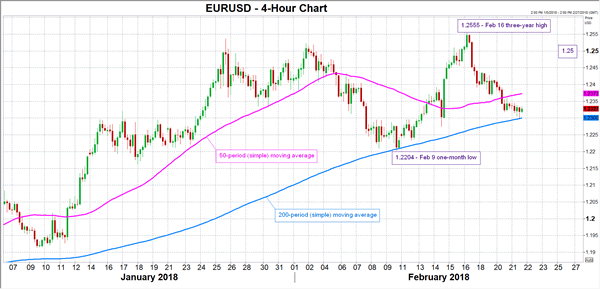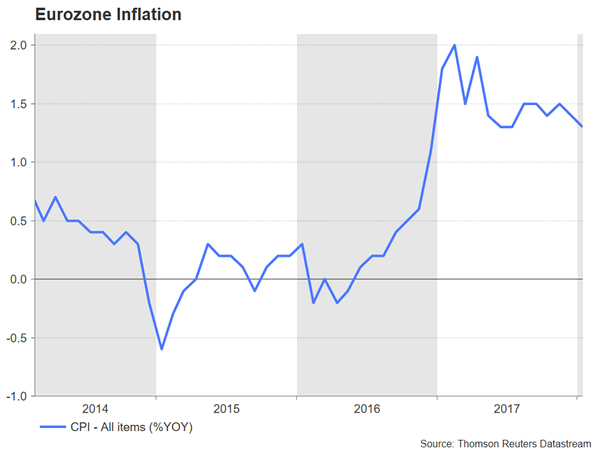The European Central Bank will release its account of the monetary policy meeting that took place in January on Thursday at 1230 GMT. The minutes from the December meeting took markets by surprise by being more on the hawkish side of the spectrum than markets expected, leading to a rally in the euro. Should Thursday’s release build on the "hawkish momentum", then the single currency is again expected to post gains.
December’s minutes indicated that the ECB may revisit its communication stance in early 2018 and led market participants to push their expectations for tighter monetary policy sooner than previously thought. Tomorrow’s record of January’s meeting will reveal whether this potential shift in policy has started becoming more concrete as early as in the first meeting of the year.
A hawkish tilt in ECB talk is anticipated to lead to a strengthening euro/dollar pair, with the area around the current level of the 50-period moving average at 1.2373 potentially acting as resistance. The range around this point also encapsulates the 1.24 handle that may be of psychological significance. Further above, the focus would shift to the range around 1.25 which was congested earlier in the year.
On the downside, support for the pair might be currently emerging around the 200-period MA at 1.23. If ECB policymakers’ views do not appear as hawkish as forex market participants expect, then a downside violation of this area might take place. In this case, the attention would turn to the one-month low of 1.2204 – including the 1.22 handle – that was recorded on February 9.

Overall, there is optimism in the markets about the eurozone remaining on a path of recovery in 2018, something which makes a tightening decision easier for the ECB. However, it should also be mentioned that not everything is conducive to a path of policy normalization. Inflation is well under the central bank’s target of below but close to 2% on an annual basis, with the account of January’s meeting possibly showing policymakers stressing this and thus advising for patience regarding the timing of further stimulus reduction.
It should also be kept in mind that another driver that could push down the euro is any policymaker concerns on an appreciating currency, something which weighs on inflationary pressures.
Returning to inflation, the euro area’s final CPI figures for January are scheduled for release on Friday at 1000 GMT. Headline CPI is expected to be confirmed at 1.3% y/y, this reflecting a slowdown relative to December. Month-on-month, headline inflation is forecast to have contracted by 0.9%. Core CPI that excludes volatile food and energy items is projected to come in at 1.0% y/y, again reflecting a slowdown relative to December’s respective figure. Given that prices in the eurozone often decline in January, one might be justified not to read much into Friday’s numbers.

Other euro risk events moving forward are eurozone flash inflation figures for February due on the last day of the month – these would constitute the last inflation input ahead of the ECB meeting on March 8 – the Italian elections on March 4, as well as the result of the German Social Democratic Party’s (SPD) ballot as regards whether the party should reenter a coalition with Chancellor Merkel’s conservative bloc. The outcome of the SPD vote could be known on the Italian election day.
Lastly, it should be stated that the Federal Reserve will later on Wednesday (at 1900 GMT) release its own record relating to its late January meeting, the last presided by Janet Yellen. This also has the capacity to spur positioning in euro/dollar.














